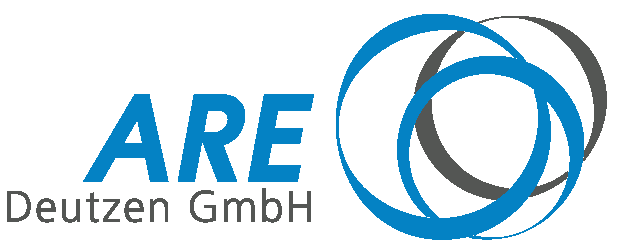The site of the soil treatment facility looks back on a long industrial tradition.
Kraft II’, a lignite power plant, is constructed 1910 in Deutzen by resolution of the shareholders in Niederlausitzer Kohlewerke. Building begins with the ground-breaking ceremony for the new power plant on 24/06/1910. Work starts on a briquette factory at the same time. This factory opened its doors on the site of today’s soil treatment facility on 25/05/1912. Six presses and rotary rube dryers with a heating surface of 945 m² used lignite extracted from the nearby open pit mine to produce briquettes for household heating.
Production capacities were increased steadily and the logistics optimised over the following years. For instance, the lignite power plant Kraft II was the first in the mining district to be equipped with an electric train to remove the overburden. In 1928, an 800-metre tunnel fitted with a bucket elevator was used to transport the raw lignite exposed through large-scale mining for processing in the briquette factory. The boiler house was initially expanded between 1929 and 1933, and then four BORSIG boilers with a heating surface of 1,600 m² were put into operation.
The development of technologies for the gasification and liquefaction of lignite improved the quality of refining. The production facilities were expanded in 1936 to include five Lurgi flushing gas sulphur furnaces for the manufacture of the end products tar, light oil and coke. The buildings themselves were also enlarged over the following years, with the construction of the pithead building, three factory halls and other new builds.
The company initially fell into the hands of the Soviet occupying forces after the end of the Second World War. It was transferred to the authorities of the German Democratic Republic in 1952, which ran it as a nationalised company until 1968 and then incorporated it within the newly established lignite cooperative Regis.
The carbonisation plant was shut down in 1974, and dismantling proceeded until 1980. The briquette factory remained in operation until 1992. Mitteldeutsche Braunkohlegesellschaft tore down the briquette factory and the power plant in the following years. The entire area was completely remediated in several stages from 1993 to 2012 by LMBV (Lausitzer und Mitteldeutsche Bergbau-Verwaltungsgesellschaft mbH), leading to the company grounds of ARE Deutzen GmbH being successfully removed from the register of contaminated sites.
Of the firmer lignite power plant, only the water tank – known as the water globe – that was constructed in 1925 and installed at Deutzen in 1938 remains in existence today. The water globe has a capacity of 200 m³ and stands 58.50 metres above ground. This remarkable structure was built by the Dortmund firm August Klönne in steel skeleton style. The spherical tank (7.50-metre diameter) and the conical struts were typical of the engineering styles of the day. Still visible along the rail tracks between Altenburg and Leipzig or even from further afield, the water globe remains an important landmark for many of the residents of Deutzen.
The factory entrance to the former briquette factory, garages for the large fleet of vehicles, a small library and the Glück-Auf restaurant were once situated at the site of today’s administrative building for ARE Deutzen GmbH.
Today’s Building I was home to the administrative headquarters, the canteen and the break rooms. Even the local savings bank had a branch here. The carbonisation plant, the light oil production system, the coke sieve and loading systems, the tar tanks, light oil tanks and loading areas were found at the current location of Building II.
